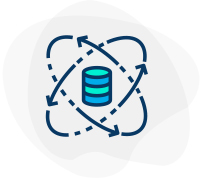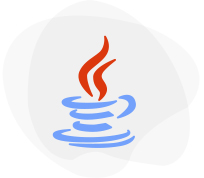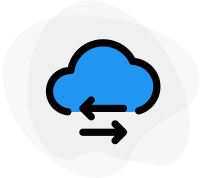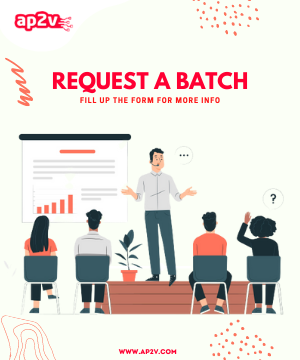Top 21 interview question in Puppet
Puppet is an open-source configuration tool that is used for the configuration, deployment, and management of servers.
- 4.9 Rating
- 21 Question(s)
- 60 Mins of Read
- None Reader(s)
Puppet is an open-source configuration tool that is used for the configuration, deployment, and management of servers. It is designed for automation of infrastructure administration tasks. It works on the DevOps software platform. Puppet come with various features that include infrastructure automation, automated provisioning, code management, task management, visualization, and reporting.
The Puppet architecture mainly consists of the communication between the Puppet Master and Agent. It is called the Master-Slave architecture. The Slave first sends a certificate signing request to Master and Master has to sign the certificate to establish a secure connection between them.
This is based on the architecture of the puppet. The facts or node representing the state of Puppet slave are sent to through a node or a puppet agent. These facts include the puppet slave up-time, IP address or operating system details. These facts are utilized by the puppet master for developing a catalog. The catalog describes the state for each resource managed by Puppet Master on Slave. The Puppet Slave then sends Reports to the Master to inform the completion of the configuration process. The Puppet dashboard displays these Reports.
The Puppet Master consists the configuration details of every node written in the native Puppet language. Manifest is the language in which these details are written for the easy understanding of Puppet. The Manifests use the filename .pp extension that are composed of Puppet code.
A collection of Manifests and data (such as facts, files, and templates) is called a Puppet Module and they have a specific directory structure. The Modules allow to split the code into multiple Manifests and are useful for organizing the Puppet code. Using Modules to organise almost all the Puppet Manifest is considered as the best practice.
The Facts relevant to each Agent are identified by the Facter library and reported to the Puppet Master. SSH keys, hardware details, IP addresses, network settings, OS type, and version, and Mac addresses are included in the Facts.
It triggers the Puppet Agent from Puppet Master. The Puppet Agent sends a request to the Puppet Master during the run interval.
The Puppet labs has developed the MCollective tool for server orchestration. The MCollective is helpful in running thousands of jobs in parallel by using the existing plugins.
It is possible to run Puppet on unique servers. Even though the chances of server being unique is very less within an organisation there are a lot of similarities that exist like the operating system that they are running on.
It is a company that solves the Puppet automation problem.
Pupper and Facter can be upgraded through the operating system package management system. This can be achieved through the vendor’s repository or through the Puppet Lab’s public repositories.
It is a document that is used for defining the configuration of the node by Puppet Agent. The Puppet Mater allows the agent to download the catalog and the catalog describes state of each resource that needs to be managed.
A block of puppet code stored in modules for later use is called as Class. The classes in Puppet are invoked by their name, else they are not applied. A class be assigned to a node’s catalog from an ENC. Classes can be added to the catalog by declaring them in manifests. Large or medium-sized bits of functionality can be configured through Classes. These functionalities can consist of config files, packages, and services necessary to run applications.
The puppet cert list command is used in Puppet Master to check the list of Certificate signing requests from Puppet Agent to Puppet Master.
Lower case letters, underscores, numbers, and ‘::’ as namespace separator are the permitted characters in class and module name. Alphanumeric characters and underscore are used as variable names that can be case sensitive.
Jira is used to manage Changes and requests that are ticketed. For managing the Puppet code in accordance with best practices Git and Puppet’s Code Manager app is used. The Jenkins breaker testing framework is used to run all of our Puppet changes through the continuous integration pipeline.
The HTTP decides the communication process between Puppet agent node and Puppet Masters with client verification. The HTTP interface with different endpoints available in Puppet Master is contacted by Agents to make an HTTPS request for requesting and submitting anything. SSL certificates are helpful in verifying the identity of the other party. An in-built certificate authority is available in Puppet for effective management of certificates.
The desired state for a resource is called Virtual resources that do not enforce that state. Virtual resources are declared once but realized any number of times.
Virtual Resources are used for:
• The management of Resources depends on at least one condition being met.
• Overlapping sets of resources which might be needed by any number of classes.
• Resources are managed when multiple cross-class conditions are satisfied.
Puppet models everything, including the intended configuration state, the actions undertaken during the configuration enforcement process, and the prevailing state of the node. Any issues related to the configuring drift as well as the unknown system state can be resolved through Puppet design. This tool can be used to add significant value to the Puppet deployment by system admins.
Puppet has the potential to define infrastructure as code can be used as innovative tool for an organisation’s cloud, and servers. It has the capacity to manage a large number of servers in a highly efficient and dynamic manner. Puppet is a part of the DevOps program that is used to manage system configurations.
Puppet is considered as a crucial part of the DevOps setting as it can be used in various scenarios. It is used for giving different configurations to every host. The overall cost and effort necessary to make slight alterations in a large number of systems is minimized through the use of Puppet.

{{ crs.category_name.all|join:" • " }}
Django Course Training Online
{{ crs.category_name.all|join:" • " }}
Data Science with Python Training Course …
{{ crs.category_name.all|join:" • " }}
PERL Training Course Online
{{ crs.category_name.all|join:" • " }}
Java Course Training Online
{{ crs.category_name.all|join:" • " }}
Python Core Training Course Online
{{ crs.category_name.all|join:" • " }}
Hadoop Training OnlineRecorded Videos
- Enhance students learning Experience.
- Relief the pressure of Note-Taking.
- Lifetime Access.
- Learning Flexibility.
- Easy to retakes of each sessions.
- Pocket friendly course.
Live Interactive Classes
- Lectures bring together diversed group of students to learn in different ways.
- Live interactive Instructor-led training.
- 24 x 7 hours learning assistance.
- Have a team of well-qualified expert trainers.
- Lifetime access of class recordings.
- Affordable fees.
Sign in to your account
Sign in to your account
Welcome back! Login with your data that you entered during registration.
-
-
Email and Password are case sensitive...
- Forget Password
Forget Password
We will send a password reset link on your email.
-
Please enter registered email.
Create Account
Create Account
Use your email for registration.
-
Please enter name
-
Please enter email
-
Please enter password
Must be grater 6 characters as long.
Can contain any letters a to z or A to Z.
Can contain some special characters eg(@,#,$,%,&,*,%).
Can contain any numbers from 0 to 9.





